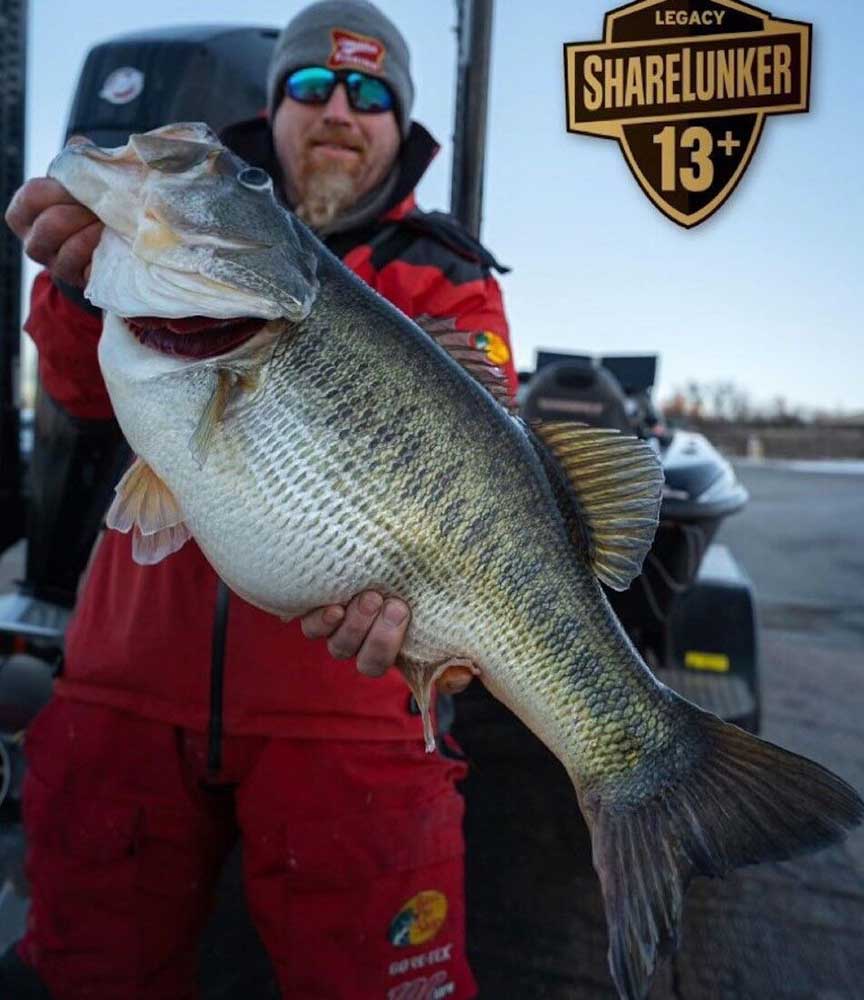Record Time: Surprisingly Texas Has Not Had A New Bass Record Since 1992
Published 11:45 pm Saturday, June 12, 2021

- Louisiana angler John McKay caught this 16.4-pound bass on O.H. Ivie Lake this winter. It was the largest ShareLunker, but only ranks 16th on the state’s top 50 largemouth bass list.
It is hard to believe but come January it will have been 30 years since Texas last had a new state largemouth bass record.
It was January 1992 when Barry St. Clair landed the current 18.18-pound state record on Lake Fork. Nothing has come within a pound since, and there have been very few getting within two pounds. Since 2000 there have been only 15 added to the Texas Parks and Wildlife Department’s top 50 list, with the biggest being a 16.4 from Ivie this season.
The fishing world has changed a lot in tackle, techniques and technologies used since St. Clair caught his fish. Baits that were not thought of are being fished in ways never before conceived, casting toward fish located on video game-like fish finders.
Still, no record fish.
Texas’ big bass season typically runs concurrent with the Toyota ShareLunker season, pre-spawn when female bass are at their heaviest with eggs. A strong ShareLunker season always amps up the anticipation of a new record. This year there were 23 bass at 13 pounds or larger caught on 10 lakes, including five lake records (Eagle Mountain, Lake Tyler, Coleman City Lake, Lake Travis, O.H. Ivie). The largest was a 16.4 from Ivie, which ranks as the 16th all-time largest recorded in Texas.
Since 1986, fishermen have recorded 614 ShareLunkers from 82 lakes in every region of the state. Then there are all the lakes that have produced 10 pound or larger bass. Quality fisheries are more the goal of TPWD, but nothing quite beats the excitement of a state record.
To look at the fish record drought, you have to first look back at St. Clair’s catch and the previous record, Mark Stevenson’s 17.67 from Fork in 1986.
“The prior two state records were caught from a fertile, new reservoir experiencing the peak of its new lake effect. Everything seemed to come together perfectly there for that run from the late-1980s through the mid-1990s,” explained Craig Bonds, TPWD Inland Fisheries director.
Other lakes have been constructed since and using the Fork blueprint pre-stocked with Florida strain bass. All have produced big bass.
“It takes an exceptional mix of variables to grow a largemouth bass over 16 pounds. Climate, genetics, longevity, ample prey of multiple sizes and quality habitat are all important. Competition among other bass for food within the system is also key. It’s rare that all these ingredients come together perfectly to grow a bass to the maximum extent of a species’ growth potential,” Bonds said.
Texas has lakes across different climate zones, the genetics of the bass start the same and the ShareLunker program shows the ability to reach the magic age of 9 and older.
Bonds points to southern California’s history of producing 18-pound-plus fish, noting the weather gets neither too hot or cold, and that the fish live on a steady diet of high-protein trout.
“Texas has a wide range of climate, latitude, altitude and habitat conditions, but still falls within a much broader range of these variables when you consider the introduced range of the Florida largemouth bass across the country and world. All these variables are important influencers in maximum size potential for this fish species,” Bonds said.
Bonds said the importance of food can be seen with ShareLunkers that put on several pounds while held in captivity and offered high protein food like trout. They are held in round tanks and do not have to expend a lot of energy foraging.
“This seems to suggest that the genetic growth potential is there, but the fish may need ideal opportunities for both feeding and resting to continue that growth trajectory up and over 18 pounds,” Bonds said.
TPWD’s efforts to produce big bass extend beyond the lake into the laboratory. The department is currently conducting genetic sequencing of a ShareLunker entry and a male bass, hoping this information eventually allows it to scientifically select the best brood bass in the future.
As for now, Bonds said there are lakes out there with the potential to produce the next record.
“I think any lake experiencing a significant new lake effect, whether it is newly constructed or recovering from drought-influenced low water levels, will have the greatest potential. That’s one reason O.H. Ivie is experiencing such a boom. Lake Naconiche is due, as its initial year classes of largemouth bass are coming of age for expressing their maximum size potential. Newly constructed Bois D’Arc Reservoir has future potential,” Bonds said.
Maybe the missing component is luck. Mother Nature can only do so much. TPWD can only do so much. It comes down to a fisherman being in the right place at the right time, and apparently that has not happened since 1992.






